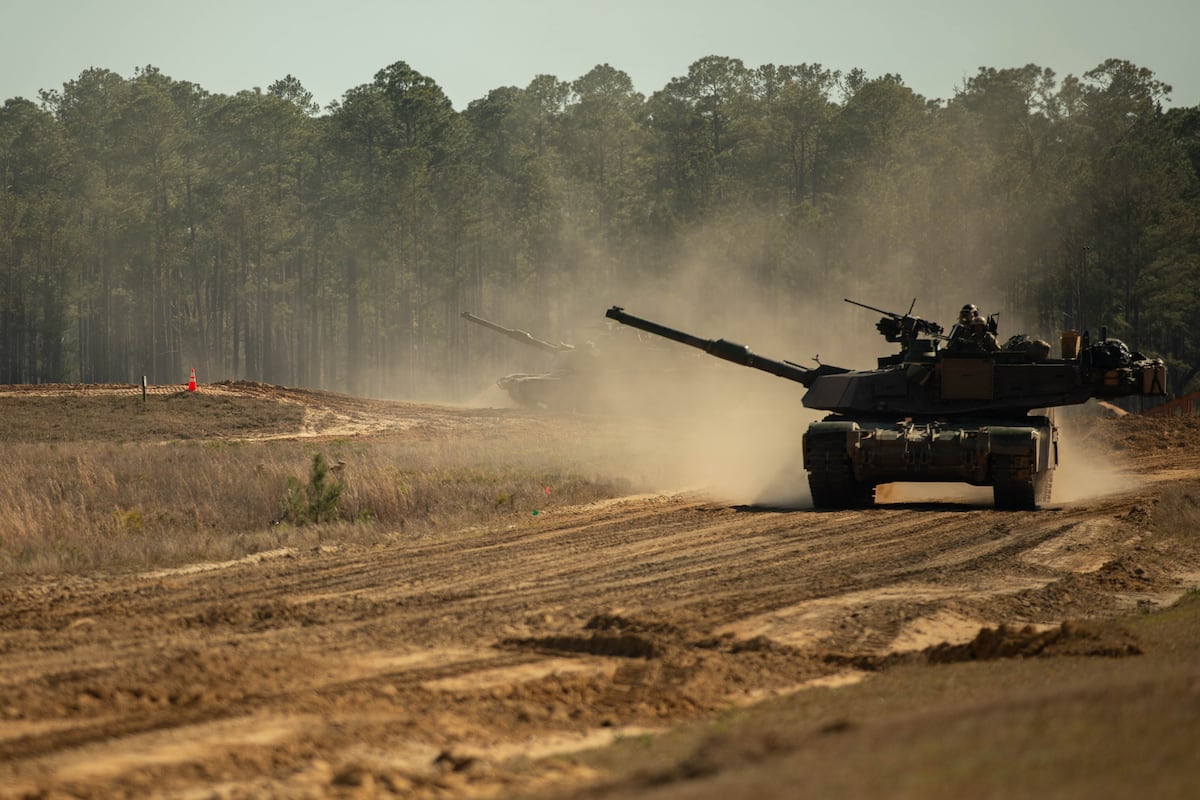World
Army Innovates Armor Brigades to Overcome Stalemate Risks

The United States Army is actively transforming its armor brigades to adapt to modern warfare dynamics, learning from the ongoing conflict in Ukraine. In an effort to prevent potential stalemates similar to those observed in the Russia-Ukraine War, the Army is rolling out new equipment and experimenting with innovative formations. This initiative, known as “Transforming in Contact” or TIC, was first introduced in 2024 for infantry brigades and is now extending to armor units.
Under the TIC framework, the Army aims to equip operational units with advanced technology, including Infantry Squad Vehicles, drones, counter-drone systems, and enhanced electromagnetic warfare capabilities. Major General Curtis Taylor, head of the 1st Armored Division, emphasized the importance of armor in contemporary combat, stating, “Armor remains vital on the battlefield because it provides mobile protected firepower to penetrate prepared defenses, seize and hold ground, and dislocate enemy combined arms.”
New Strategies and Equipment for Armor Brigades
The Army’s focus is now shifting towards Armor Brigade Combat Teams (ABCTs) and division-level assets. Major General Thomas Feltey, who leads the 1st Cavalry Division, which includes two brigades participating in the TIC initiative, shared insights on upcoming training exercises. The 2nd Armored Brigade Combat Team is scheduled to undergo training at the National Training Center at Fort Irwin, California, in November. This training will test the new equipment and formations developed under the TIC strategy.
These brigades will feature a Multifunctional Reconnaissance Company and a Multipurpose Company to enhance operational flexibility. Changes also include separate configurations for tank companies, with a 12-tank and a 14-tank company, as well as varied mechanized infantry formations. Colonel Alexis Perez, commanding the 2nd ABCT, 3rd Infantry Division, noted the ambitious training objectives, with simulations targeting the destruction of 224 enemy tanks, 224 tracked vehicles, and numerous aerial systems within a 24- to 48-hour timeframe.
To achieve these objectives, the brigades will leverage their division assets, including enhanced artillery support. Division artillery now includes a rocket battalion and multiple direct support battalions equipped with cannon artillery. Feltey highlighted the importance of integrating firepower and maneuverability, stating, “What we’re seeing in Ukraine and in World War I after the front froze, we lost our ability to conduct fires and maneuver.”
Innovative Technologies Enhance Combat Effectiveness
The integration of new technologies such as drones and one-way attack munitions is critical to the Army’s strategy. Colonel Brian Frizzelle, leading the 1st ABCT, 1st Armored Division, recounted the successful implementation of live kamikaze drone strikes during training. These innovative tactics allow armored formations to effectively penetrate and exploit enemy defenses.
As part of their preparations, soldiers are spending extended periods in the field, including a recent 30-day training exercise followed by a 45-day field exercise to refine new formations and communication strategies. Feltey noted the importance of bringing major division assets to the National Training Center to ensure comprehensive operational readiness.
Concerns about maintenance and logistical support are paramount, especially given the size and complexity of the ABCTs. Frizzelle pointed out that while a larger number of vehicles can generate significant electrical power, they also present challenges in terms of maintenance and vulnerability on the battlefield. “Maintenance is training,” he stated, emphasizing the need for effective training to minimize equipment failures during exercises.
In response to the evolving threat landscape, the Army is also considering reducing the size of command posts, which can be easily targeted by adversaries. Major General Charles Lombardo, head of the 2nd Infantry Division, suggested that commanders should prepare to 3D-print drones to enhance protection for their units, indicating a shift towards more adaptive and resourceful combat strategies.
Overall, the Army’s transition to a more dynamic and technologically advanced approach to armor operations reflects a commitment to learning from contemporary conflicts and improving readiness for future challenges. As they refine these strategies, the Army aims to maintain its effectiveness and adaptability on the modern battlefield.
-

 Science4 weeks ago
Science4 weeks agoALMA Discovers Companion Orbiting Giant Red Star π 1 Gruis
-

 Top Stories2 months ago
Top Stories2 months agoNew ‘Star Trek: Voyager’ Game Demo Released, Players Test Limits
-

 Politics2 months ago
Politics2 months agoSEVENTEEN’s Mingyu Faces Backlash Over Alcohol Incident at Concert
-

 World2 months ago
World2 months agoGlobal Air Forces Ranked by Annual Defense Budgets in 2025
-

 World2 months ago
World2 months agoMass Production of F-35 Fighter Jet Drives Down Costs
-

 World2 months ago
World2 months agoElectrification Challenges Demand Advanced Multiphysics Modeling
-

 Business2 months ago
Business2 months agoGold Investment Surge: Top Mutual Funds and ETF Alternatives
-

 Science2 months ago
Science2 months agoTime Crystals Revolutionize Quantum Computing Potential
-

 Top Stories2 months ago
Top Stories2 months agoDirecTV to Launch AI-Driven Ads with User Likenesses in 2026
-

 Entertainment2 months ago
Entertainment2 months agoFreeport Art Gallery Transforms Waste into Creative Masterpieces
-

 Business2 months ago
Business2 months agoUS Government Denies Coal Lease Bid, Impacting Industry Revival Efforts
-

 Health2 months ago
Health2 months agoGavin Newsom Critiques Trump’s Health and National Guard Plans









